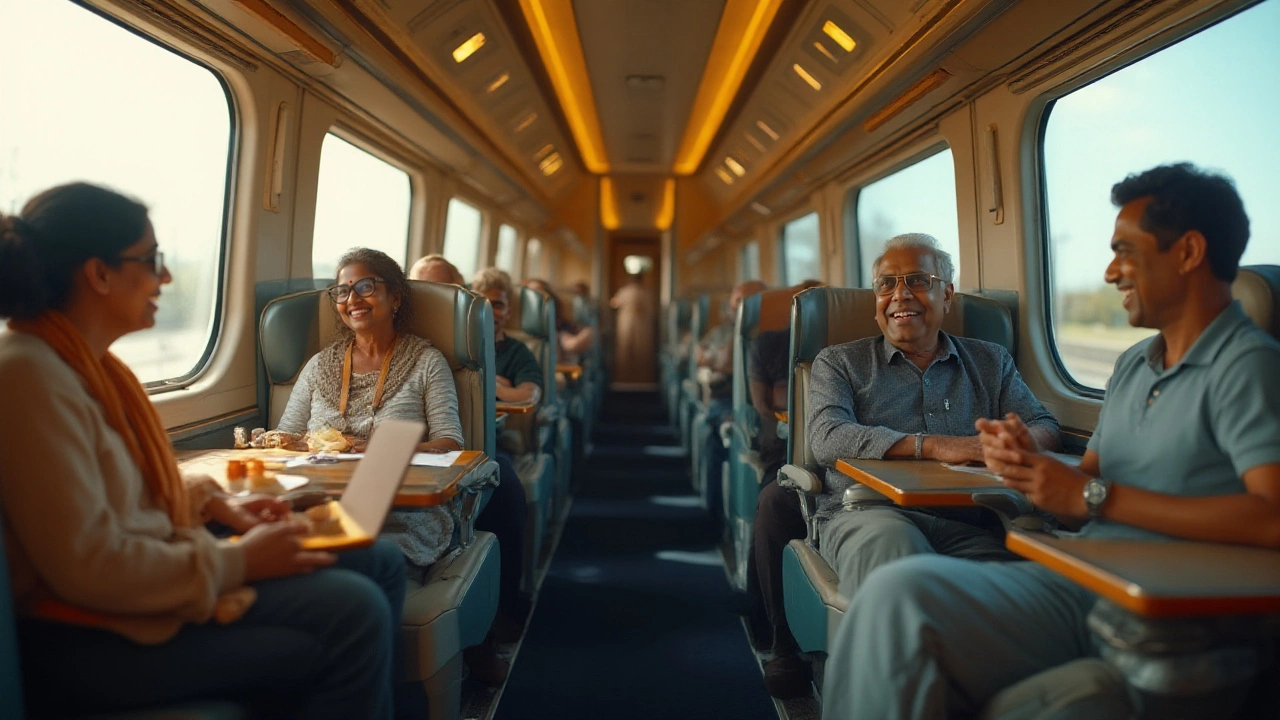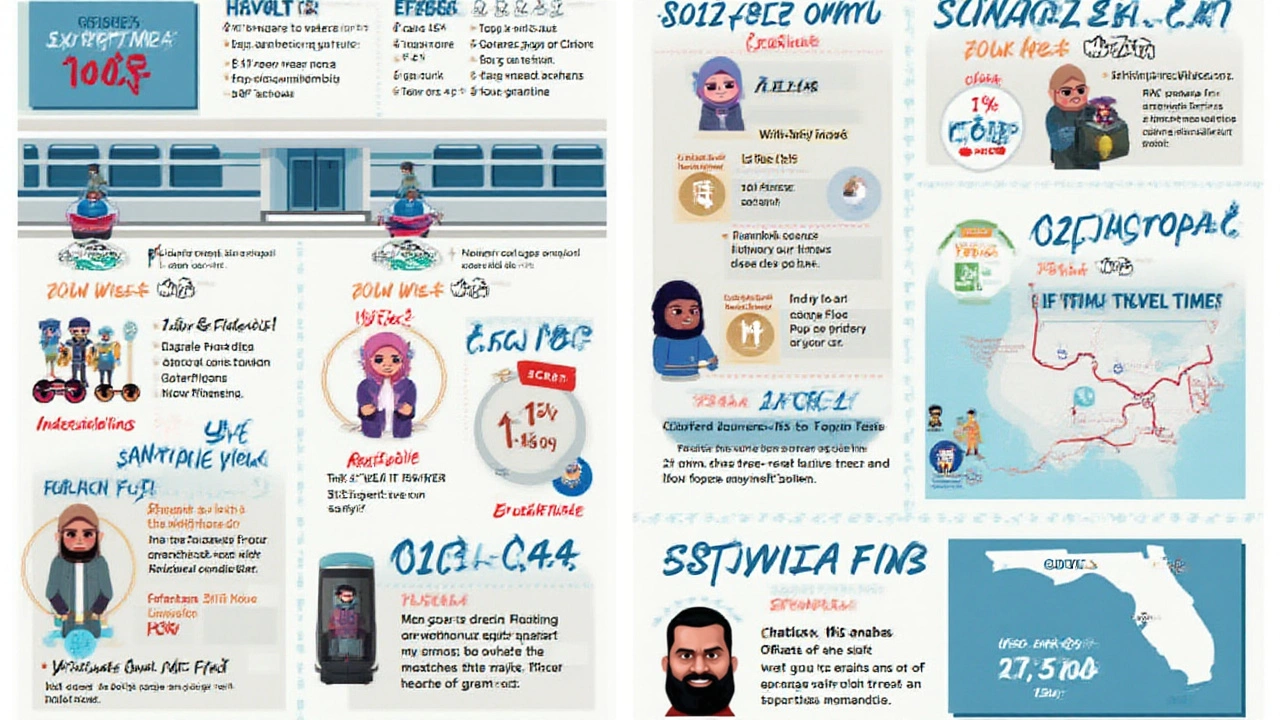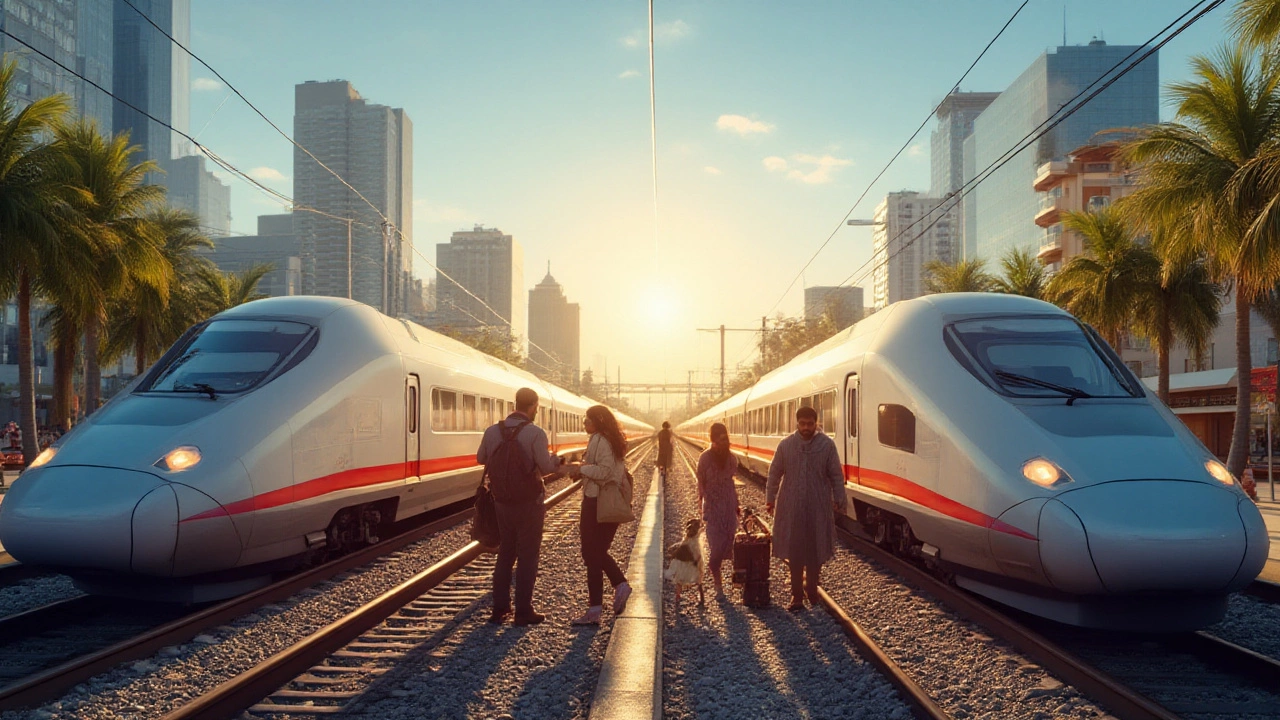Think high-speed train travel is just a European thing? Not so fast. The U.S. has two big names in the game: Amtrak’s Acela and Florida’s Brightline. On the surface, they promise similar things—speedy, comfortable trips on clean rails. Yet, their stories, markets, and luxury levels couldn't be more different. If you’ve heard the hype but aren’t sure which one best fits your travel style, it’s time to settle the Acela vs Brightline debate—once and for all.
The Basics: Where They Run and Who They Serve
If you’re picking between Acela and Brightline for your next journey, the first thing that matters is simple: geography. Where do they actually go? Acela is the old pro, launched by Amtrak back in 2000 and serving the busy Northeast Corridor. Picture the business suits and power lunches between Boston, New York, Philadelphia, and Washington, D.C. That’s Acela territory. This stretch, just under 460 miles, is the backbone of America’s train travel. The passengers? Mostly business folks, politicians, and those who don’t mind shelling out for an upgrade over bus or regular Amtrak. The current Acela trains zip along at up to 150 mph (about 241 km/h), but the average speed gets dragged down by 100-year-old tracks, with plenty of sharp curves and old bridges slowing things down. Still, it’s usually the fastest shot between these major cities, beating car travel by hours and even outpacing the airport hassle for door-to-door times.
Brightline, on the other hand, is the new kid on the rails—Florida’s bid to show that America can do slick, modern trains, too. The service rolled out in 2018 (as “Virgin Trains USA” for a quick blink), first linking Miami and West Palm Beach, with stops in Fort Lauderdale and Boca Raton along the way. By 2023, Brightline stretched all the way to Orlando, putting theme parks and sunny beaches within a few hours of each other. There’s real talk about extending Brightline even further, possibly reaching Tampa and maybe even heading west to Las Vegas if other plans catch steam. This is leisure territory—think vacationers, families, and remote workers in t-shirts, not Wall Street lawyers. The Brightline trains aren’t as fast as Acela in sheer numbers (125 mph, about 200 km/h, tops), but the rides are often smoother thanks to new tracks and less congestion. The hubs are sparkling with modern lounges and Hollywood-style restrooms, plus you can bring your bike or your pet.
What’s really wild? Amtrak’s Acela is entirely government-owned and mostly sticks to the old-school Northeast, while Brightline is the first big private passenger rail project in the U.S. in over half a century. If you’re traveling for business in the Northeast, it’s Acela or nothing. If you’re sun-chasing or headed for Florida fun, Brightline’s your go-to.
| Service | Main Route | Top Speed (mph) | Who Rides? | Opened |
|---|---|---|---|---|
| Amtrak Acela | Boston–NYC–Washington, D.C. | 150 | Business travelers | 2000 |
| Brightline | Miami–Orlando | 125 | Leisure, families | 2018 |

Speed, Comfort, and Service: Not All Trains Are Created Equal
Anyone who’s ever slogged through security at JFK or sat in bumper-to-bumper I-95 traffic knows that “fast” is relative. So, when you hear Acela is America’s fastest train, take it with a grain of salt. Yes, Acela hits 150 mph in short bursts, especially between New York and Boston, but it spends a chunk of its route slowing for old infrastructure. That means your real-world average speed is about 80-90 mph. Still, you can leave Boston at 6 a.m. and be in D.C. before lunch without airport pat-downs or hotel pick-up shuttles. Acela trains run quiet, with all seats reserved, and they’re optimized for work: think tray tables, power outlets, strong Wi-Fi (by U.S. standards), and business-class perks. There’s even a “Quiet Car” if you hate phone chatter.
Brightline’s not out to win drag races with Acela, but it claims the title for the most comfortable ride in the Southeast. The trains have a fresh, South Florida vibe—think wide leather seats, free Wi-Fi that actually works, extra legroom, USB ports, and big windows. In the top-tier “Premium” class, attendants serve snacks and bottomless drinks (yes, including cocktails). Lounges are designed like swanky airport clubs—espresso machines, piles of magazines, and even showers at some stations. Across all classes, luggage space is generous, which matters when you’re packing for theme parks, not just client meetings.
- Tip: Acela has train attendants and cart service, but the food menu is closer to airline fare. Expect sandwiches, snacks, and drinks included for first-class; economy gets buy-on-board.
- Tip: On Brightline, an app lets you order parking, buy tickets, and even book Uber rides—smooth for planning a whole Florida day.
- Fun fact: Both trains let you bring pets, but Brightline is more pet-friendly (think: free cat and dog travel days).
Here’s a twist nobody tells you: Brightline lets you show up minutes before departure and still hop onboard. Thanks to reserved seats and no airline-style check-ins, you’re not sweating in line. Acela is the same, but big stations get crowded on weekdays; business travelers swear by booking early, especially for the coveted Friday evening slots north out of D.C. and New York.
One thing both trains share? They’ve each scored high marks on cleanliness, safety, and on-time ratings, leaving old Amtrak regional trains in their dust. Brightline even got national news for being America’s first carbon-neutral rail service—so if cutting emissions matters to you, Brightline is a quiet winner.
| Service | Average Ticket Price (USD) | Classes | Free Wi-Fi? | Luggage Policy |
|---|---|---|---|---|
| Acela | 150-250 (business class) | Business, First | Yes | Large bags allowed, overhead and racks |
| Brightline | 79-149 (standard) | Smart, Premium | Yes | 2 bags free, plenty of room |

Price, Access, and Little-Known Secrets
Let’s be honest: price can make or break a train trip. Acela has a reputation for being expensive—and it’s deserved. On busy days, a roundtrip between Boston and New York can smack you for $300 or more in business class. First-class service, with better seats and meals brought to your table, pushes that past $500 if you shop late. The question is, are you paying for speed or status? Among Northeast Corridor regulars, the answer is usually both. If you want cheaper seats, look at Amtrak’s regular “Northeast Regional” trains, but you’ll lose the speed.+
Brightline wants to be the budget-friendly alternative for Florida travelers. Prices shift by demand, but standard fares can dip below $100 for Miami to Orlando, especially if you buy in advance or catch off-peak times. Their “Premium” class, with food and drinks included plus lounge access, can still be half the price of an Acela first class fare for similar distances.
- Booking Tip: Fare sales pop up regularly, especially for families and early planners. Their kids-ride-free deals can save a bundle during school breaks.
- Rewards: Both services offer frequent traveler programs. Acela plugs into Amtrak Guest Rewards (points for free tickets, upgrades, and hotel partners). Brightline’s “Brightline+” tosses in ride-sharing, station parking, even future bike rentals in Orlando and Miami.
Accessibility is another hidden difference. Acela’s stations are deep in major cities—Grand Central in New York, South Station in Boston, Union in D.C.—which means super-easy connections to subways, big hotels, and events. Brightline’s Miami and Orlando hubs are brand-new and a little outside traditional business zones, but connect directly to airports, rideshare, and car rentals. The trick? Arrive early to explore: Brightline’s MiamiCentral, for example, is packed with art installations and outdoor cafes.
Final tip: If you’re after the smoothest, least stressful point-to-point trips in the U.S., both trains beat flying and driving for their sweet spot routes. Just remember which markets they cover, check the ticket sales calendar, and pick your class wisely. Onboard, settle in with a drink, catch up on e-mail, or just watch America’s highways crawl past as you glide by. High-speed rail isn’t just for Europe anymore. You might not get baguettes and champagne, but hey, free Wi-Fi and a real cupholder have their own kind of magic.
